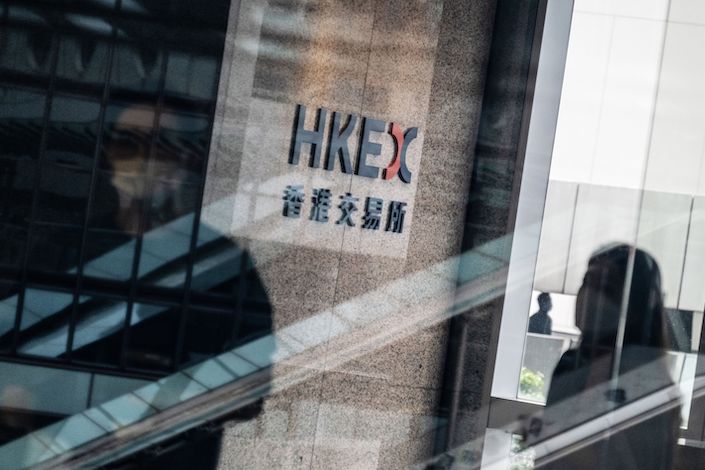Hong Kong Connect Opens China ETF Market to Global Investors

(Bloomberg) — China’s fast-growing $157 billion market for exchange-traded funds (ETFs) became directly accessible to overseas investors Friday, at least four years after the plan was hatched.
Four so-called “feeder” ETFs started trading in Shenzhen and Hong Kong, the first batch in a project aimed at connecting the two markets. The Shenzhen funds track the Hang Seng China Enterprises Index and the S&P New China Sectors Index, while the Hong Kong-listed ETFs follow the benchmark CSI 300 Index and a gauge of China’s 5G companies.
The investment vehicles collect capital locally and settle trades across the border. They are popular with retail traders around the world because they’re among the cheapest way to trade an index. Some 900 million yuan ($135 million) of funds was gathered in a pre-sale of the ICBC CSOP S&P New China Sectors ETF, according to Melody He, managing director at provider CSOP Asset Management Ltd.
Regulators in Hong Kong have been mulling broadening trading links with the mainland to include ETFs since at least 2016. The plan was delayed partly due to complex clearing and settlement issues. At $40 billion, Hong Kong’s ETF market is smaller than the mainland’s even though its first fund was launched five years before China’s in 1999. ETFs in China nearly doubled in value in the first half of this year.
“This is the very start of ETF connectivity,” said Bloomberg Intelligence analyst Sharnie Wong.
Turnover for the two feeder ETFs tracking Hong Kong assets, Yinhua ICBC CSOP S and P New China Sectors ETF and Harvest Hang Seng China Enterprises Index ETF, totaled 97 million yuan as of 11:49 a.m. local time. The two ETFs tracking mainland stocks together attracted about HK$1.9 million ($245 million) of turnover, according to data compiled by Bloomberg.
While there are ETFs in Hong Kong, London and New York that follow China’s onshore equity market, the tracking error can be as high as 15%, partly due to limits on foreign ownership. The feeder ETFs can better replicate mainland benchmarks because their providers are local and won’t be subject to caps.
Overseas investors are currently permitted to own no more than 30% in yuan-denominated shares.
Unlike other major stock markets in the U.S. or Japan, China — the world’s second-largest — isn’t overrun by ETFs. Individual investors haven’t caught on to the products even though costs can be a lot lower than with mutual funds, partly due to little demand for individual stock research.
ETFs can be traded in real time and in the U.S. are growing increasingly complex and diverse since the first one came about in 1993. China’s first ETF was launched by China Asset Management Co. in 2004. ETFs started to gain traction in China only after MSCI Inc. added yuan-denominated shares to its benchmarks in 2018.
Cross-border trading of ETFs between Hong Kong and the mainland will take time to grow, and the experience of the stock connect scheme launched in 2014 between both sides could be instructive, Wong said.
“It could take six years for northbound trading to contribute 5% to mainland China’s ETF turnover, assuming participation of international investors in ETFs is similar to that of A-shares,” she said. “It may take only two years for southbound trading to contribute 5% to Hong Kong’s ETF turnover, if mainland investors’ appetite for Hong Kong-listed ETFs is similar to that of stocks.”
Contact editor Bob Simison (bobsimison@caixin.com).
Support quality journalism in China. Subscribe to Caixin Global starting at $0.99.

- MOST POPULAR






